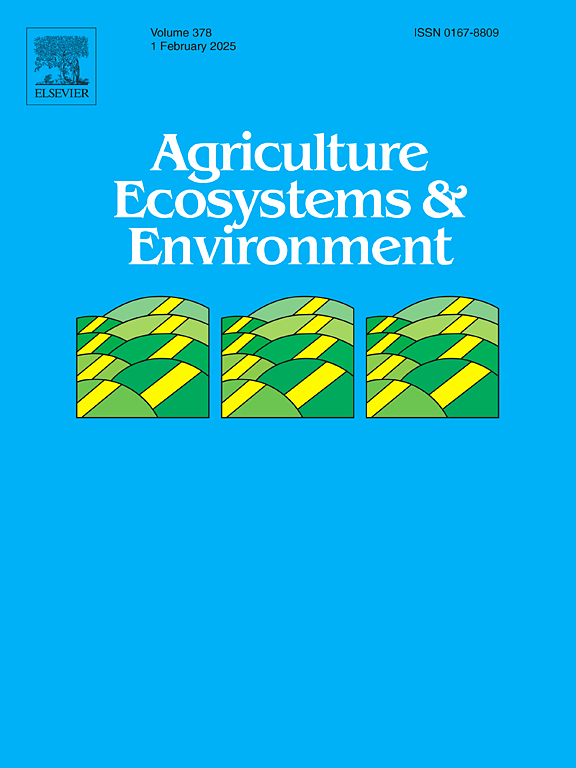Land-use change and deep-soil carbon distribution on the Brazilian Amazon-Cerrado agricultural frontier
IF 6
1区 农林科学
Q1 AGRICULTURE, MULTIDISCIPLINARY
引用次数: 0
Abstract
Land-use change and agricultural intensification drive the widespread and relatively rapid decline of carbon (C) stocks in surface soils of the Amazon-Cerrado transition region of Brazil. However, less is known about C changes in deep-soil profiles. To understand the carbon dynamics in deep soils affected by land-use change and agricultural intensification, we sampled soil up to 800 cm beneath native forest (NV), minimum tillage soybean (S), soybean-maize (SM) cropland, old pasture (OP), and recently deforested land (RD) that was maintained as cleared but not cropped. All sampling took place at Fazenda Tanguro in Mato Grosso, Brazil. We determined soil C concentrations, mineral-associated organic matter (MAOM), particulate organic matter (POM), δ13C, and water-extractable C (WEC). Soil C stocks to 800 cm ranged from 168.4 Mg ha−1 to 288.3 Mg ha−1. Regardless of the land use, the top 100 cm contained 30–40 % of the C stock to 800 cm, and about 50 % of all soil C stocks was concentrated until 300 cm. Conversion of forest to no-till single-cropping soybean negatively impacted soil C until 100 cm through reduction of MAOM stocks. The WEC concentrations were highest at the surface and decreased with depth. The RD showed the lowest WEC concentrations in the topsoil layer. Production intensification on the cropland led to superficial soil C accrual. Pasture showed great potential to store C through POM inputs on subsoil. This study provides important insights into the dynamics of carbon profiles in deep soils following land-use change and agricultural intensification. Thus, we can highlight: 1) Removal of native vegetation promotes rapid changes in surface C dynamics (less than 100 cm), consequently impacting C pools up to at least 300 cm in depth; 2) Intensification through double cropping has the potential to promote the restoration of these productive C pools over time; 3) as expected, soil C storage is closely related to clay content. Finally, based on these findings, we recommend that studies related to the impacts of agricultural expansion and intensification on the dynamics of soil C pools should focus efforts on sampling at least 100 cm deep in the soil, with stratified collections each 10 cm in the surface layers (up to 50 cm), and extend it to at least 300 cm, considering more areas, soil types, soil attributes, and land uses.
求助全文
约1分钟内获得全文
求助全文
来源期刊

Agriculture, Ecosystems & Environment
环境科学-环境科学
CiteScore
11.70
自引率
9.10%
发文量
392
审稿时长
26 days
期刊介绍:
Agriculture, Ecosystems and Environment publishes scientific articles dealing with the interface between agroecosystems and the natural environment, specifically how agriculture influences the environment and how changes in that environment impact agroecosystems. Preference is given to papers from experimental and observational research at the field, system or landscape level, from studies that enhance our understanding of processes using data-based biophysical modelling, and papers that bridge scientific disciplines and integrate knowledge. All papers should be placed in an international or wide comparative context.
 求助内容:
求助内容: 应助结果提醒方式:
应助结果提醒方式:


